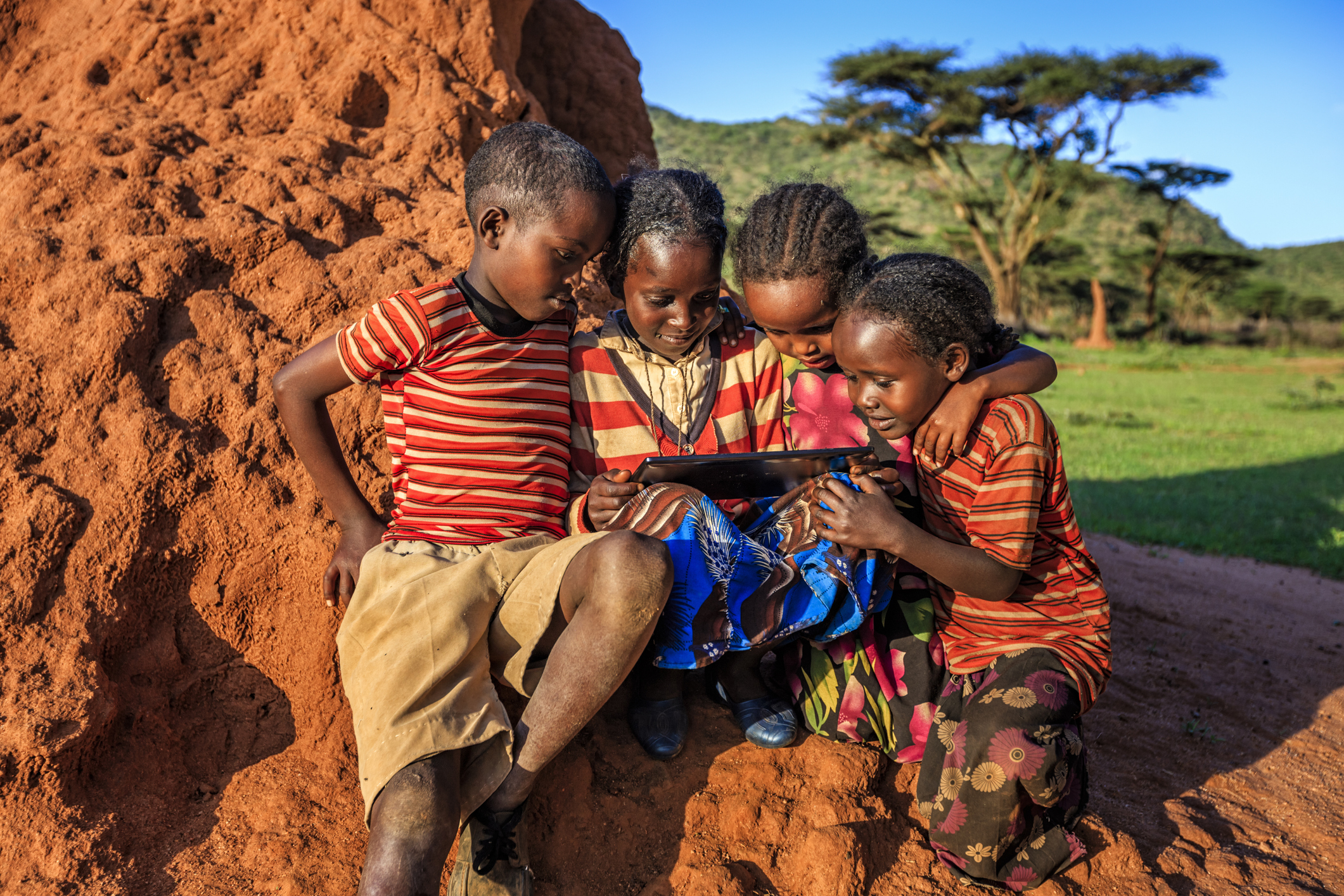
International Day of the Africa Child Blog
Significant changes have taken place across the globe in the digital environment since the day of the African Child was first celebrated in 1991 by the Organization of African Unity. From the discovery of the internet in the 1980s, the development of the world wide web in the 1990s, and the subsequent ongoing modernization of the computer and mobile technology, our world today could rightly be described as a ‘digital world’. The growth of digital technology and expansion of the digital space, whilst representing a breakthrough particularly in the fields of communication and information technology, and a great opportunity for learning and development, has also become a cause for concern as both useful and harmful information are now abundantly available and only a click away. As children are vulnerable members of the global community, growing up in our rapidly changing digital world demands that due attention is paid to the impact of this phenomenon on them, ensuring that the rights of the child are prioritized and protected. It is therefore both timely and crucial to focus on the rights of the child in the digital environment on this Day of the African child, to reflect on the opportunities for the African child, the potential risks posed, and to raise thoughts on a right-based approach to ensuring that the African child lives in a productive, healthy, and safe digital environment.
Digital environment and children; the good, the bad and the rights of the child
The digital environment is of fundamental importance in the daily lives of children. Far from just providing a platform for fun such as games and entertainment, it presents several benefits to children, opening new and improved channels for education, harnessing talent potential, and offering opportunities for creativity and social interaction. It is now common to access educational websites and schoolwork on the mobile platform. ChatGPT, an artificial intelligence chatbot developed by OpenAI, has recently hit the digital landscape as a promising tool in education and scholarship. Though still in early stages, the potential for deploying the platform for educating the African child is worthy of exploration. Engagement with the digital environment has been made possible partly by the surprisingly high rate of penetration of mobile phone use in developing countries. The Global Systems for Mobile Communication data reveals that sub-Saharan Africa (SSA) had about 456 million mobile phone subscribers by the end of 2018 and predicts that half the population in SSA will subscribe to mobile phone services by 2025. A recent study assessing use of digital media among young adolescents (aged 10 – 15yrs) in sub-Saharan Africa showed that approximately 40% of the adolescents in Burkina Faso and South Africa, 36% in Sudan, 13% in Ethiopia and 3% in Tanzania owned mobile phones. The study also highlighted inequalities in mobile phone ownership with significantly more boys owning mobile phones, computers and social media accounts compared to girls. With more health information being delivered through the digital medium, gaps in health knowledge could be significantly closed with access to quality-assured information through the digital media. This could be particularly important to adolescent African girls who could benefit from sexual and reproductive health information in a context where open discussion and interactions on the subject are still fraught with systemic challenges. In fact, digital interventions such as use of SMS messages have been shown to be effective in imparting knowledge and achieving behaviour change among adolescents in LMICs in sexual and reproductive health, HIV prevention and mental health.
Digital technology is also increasingly useful in the delivery of other health interventions such as reminders for immunization and nutritional advice. Growing up in rural Nigeria, many years before the digital explosion, I returned to school after holiday on a few occasions to find that one or two friends had not returned. They had died of childhood illnesses that could have been prevented had their parents and carers been empowered with the right information and supported with needed health services. I continue to vividly recall the gory sight of a childhood play mate who died right in my sight, whilst she was being force-fed and heated on a flame during an episode of febrile convulsions. Now, several decades down the line, it is encouraging to see the potential positive impact of digital technology on the health of children. Therefore, cconcerted efforts must be made to systematically harness the opportunities of the digital environment in health promotion and education and deploy them for the benefit of the African child.
However, the digital environment also presents serious risks, including cyberbullying, sexual extortion, grooming, exploitation, and risks to privacy. The undeniable importance of these risks has been highlighted by the many reports of depression, other mental health conditions and deaths of young people who had faced cyber bullying on the social media space. Apart from these inherent risks encountered by children in the digital environment, the African child faces serious health crisis from exposure to dangerous chemicals and air pollutants resulting from uncontrolled dumping of e-wastes in Africa, Asia, and Latin America. The WHO has recently highlighted the dimensions of this problem and the health effects faced by children as a result, calling for leadership and advocacy for strong national and local policies that will ensure responsible handling of e-waste materials from the burgeoning global electronics market.
Concluding thoughts
While maximizing the benefits of the digital environment for children, especially in education and health which are critical areas of need among African children, a clear regulatory framework is necessary to ensure that children engage the current digital revolution in the safest way possible. The UN convention on the rights of the child entered into force in 1990 about the same time the first day of the African child was celebrated. It should now be a blueprint not only to guide the global implementation of the rights of the child, but also to serve as a framework for continuous engagement with the rights of children in our increasingly volatile and unpredictable digital world. It is of utmost importance therefore that governments and all stake holders approach child rights in the digital environment with the same vigor and rigor employed in the UN convention. Additionally, concerted efforts must be made to crack down on rogue organizations and businesses that expose children to harmful contents. This international day of the African child presents an opportunity to galvanize action on managing the exploding digital environment for the benefit of all children, especially the African child who continues to bear the burden of inequalities not only in health and education, but also in the beneficial and harmful effects of technological innovation. Shrinking from meaningful engagement with this subject would be abdication of crucial responsibility and akin to abandoning the African child in their hour of need.
About me and my interest in this subject

I grew up in Nigeria and trained as a children’s doctor, public health researcher and teacher. I am a passionate child advocate, and deeply invested in advancing healthy life for children all over the world, especially in Africa. I know children are entitled not only to protection from harm in the time of their greatest vulnerability, but they also deserve the maximum benefits from developments and interventions that potentially impact their health and wellbeing. The importance of being a part of my children’s digital journey first dawned on me when we saw my son confidently searching google at 4 years of age for contents such as Micky mouse club house and special agent Oso. My current work contributes to healthy life for children by ensuring that pregnant women have access to quality care through pregnancy and childbirth, and that newborn children are given opportunity for a healthy start to life.
Author
Uzochukwu Egere FWACP MPH PhD
Senior Research Associate, Emergency Obstetric and Quality of care Unit,
Department of International Public Health
Liverpool School of Tropical Medicine, UK
References
Wang, D., Shinde, S., Drysdale, R., Vandormael, A., Tadesse, A.W., Sherfi, H., Tinkasimile, A., Mwanyika‐Sando, M., Moshabela, M., Bärnighausen, T. and Sharma, D., 2022. Access to digital media and devices among adolescents in sub‐Saharan Africa: A multicountry, school‐based survey. Maternal & child nutrition, p.e13462.
Chandra, P. S., Sowmya, H. R., Mehrotra, S., & Duggal, M. (2014). ‘SMS’ for mental health–feasibility and acceptability of using text messages for mental health promotion among young women from urban low income settings in India. Asian Journal of Psychiatry, 11, 59– 64
GSMA Intelligence - https://www.gsma.com/services/gsma-intelligence/
World Health Organization. (2021). Children and digital dumpsites: e-waste exposure and child health.
Hamm, M. P., Newton, A. S., Chisholm, A., Shulhan, J., Milne, A., Sundar, P., ... & Hartling, L. (2015). Prevalence and effect of cyberbullying on children and young people: A scoping review of social media studies. JAMA pediatrics, 169(8), 770-777.